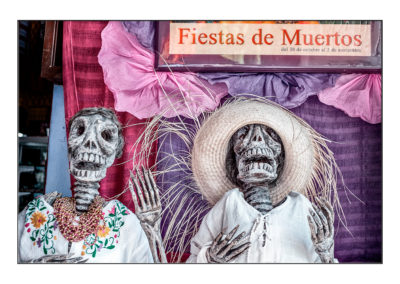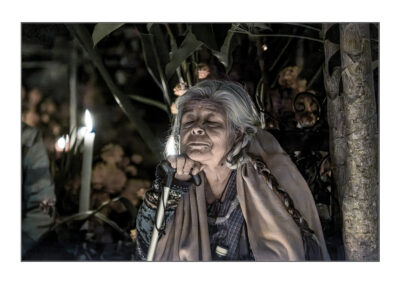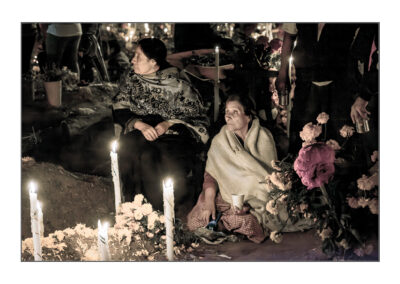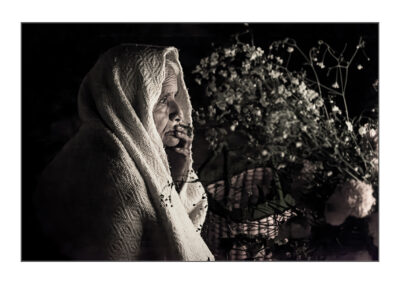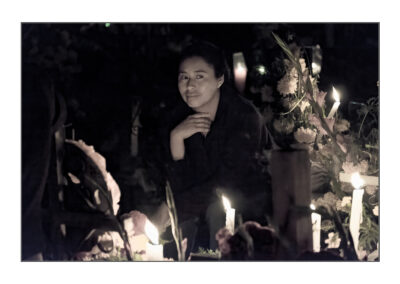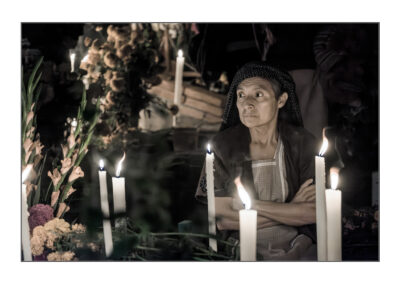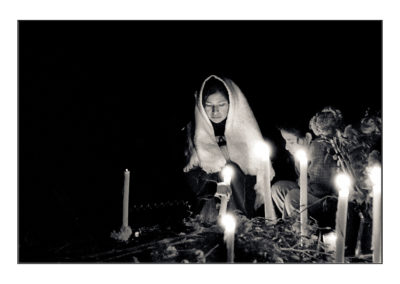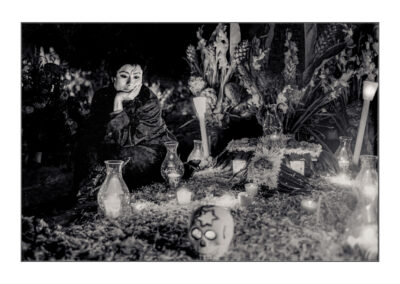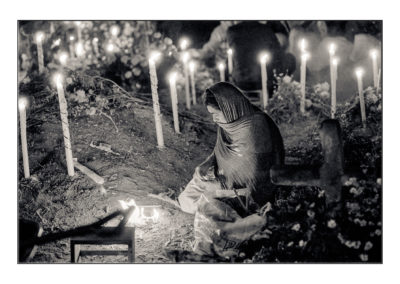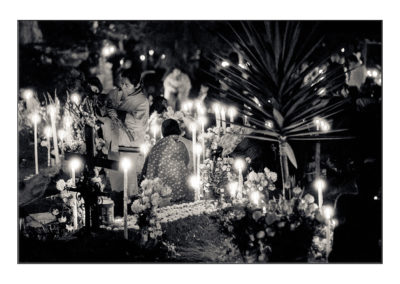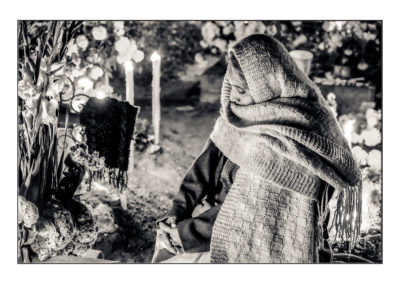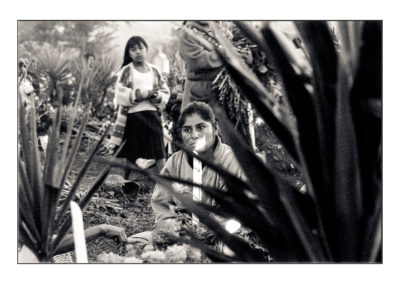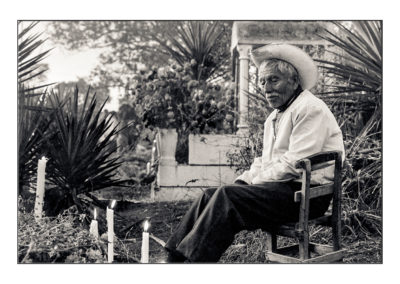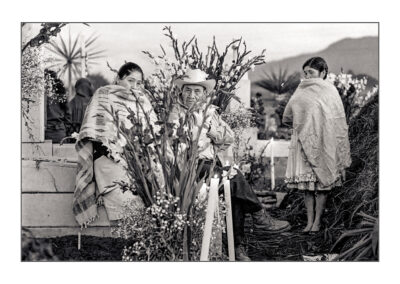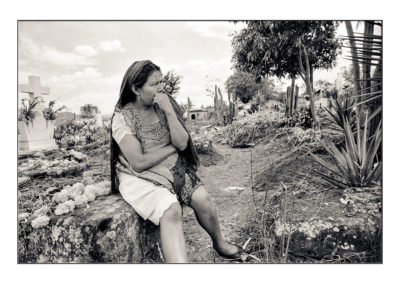Dìa de los muertos
| leggi il commento in fondo alla pagina | lee el comentario al final de la página | read the comment at the bottom of the page |
Italiano
Arrivai a Oaxaca dopo un viaggio in pullman di alcune ore da Città del Messico e appena sceso percepii subito un profumo intenso. Era il mese di ottobre che, come tutti gli anni, è il periodo di raccolta del cempasùchil, cempoalxochitl in lingua nahuatl, che significa il fiore dagli infiniti petali. Il fiore del dìa de Muertos, il Giorno dei Morti ci avvisa che si avvicina il momento in cui le anime di chi ci ha lasciato hanno la possibilità di tornare, per poche ore, tra i propri cari.
Allora tutte le famiglie si recano al cimitero per attendere l’arrivo delle anime, portandosi dietro mezcal, aguardiente, pan de muertos, pietanze cucinate e grandi quantità di frutta da mangiare insieme a loro. Le tombe vengono ricoperte di fiori, di doni e di candele. Il fumo dolce del copal sale da centinaia di incensari disposti intorno alle tombe. Al calare del sole il cimitero viene avvolto dall’oscurità e migliaia di candele iniziano a brillare. Centinaia di volti indigeni, raccolti intorno alle tombe, vengono illuminati dalla loro luce tremolante. Tra fiori, candele e copal, bambini, donne e uomini, seduti o sdraiati in terra conversano, mangiano, cantano e ridono, bevendo aguardiente o mezcal insieme alle anime dei loro cari che, dopo poche ore, dovranno tornare nel regno dei morti.
Español
Llegué a Oaxaca después de un viaje en autobús de varias horas desde la Ciudad de México y, apenas bajé, percibí un aroma intenso. Era el mes de octubre que, como todos los años, es el período de cosecha del cempasúchil, cempoalxochitl en lengua náhuatl, que significa la flor de los infinitos pétalos. La flor del Día de Muertos nos avisa que se acerca el momento en que las almas de quienes nos han dejado tienen la posibilidad de regresar, por pocas horas, entre sus seres queridos. Entonces, todas las familias se dirigen al cementerio para esperar la llegada de las almas, llevándose mezcal, aguardiente, pan de muertos, platillos cocinados y grandes cantidades de fruta para comer junto a ellas. Las tumbas se cubren de flores, de ofrendas y de velas. El dulce humo del copal se eleva de cientos de incensarios dispuestos alrededor de las tumbas. Al caer el sol, el cementerio se envuelve en la oscuridad y miles de velas empiezan a brillar. Cientos de rostros indígenas, reunidos alrededor de las tumbas, son iluminados por su luz titilante. Entre flores, velas y copal, niños, mujeres y hombres, sentados o acostados en el suelo, conversan, comen, cantan y ríen, bebiendo aguardiente o mezcal junto a las almas de sus seres queridos que, después de pocas horas, deberán regresar al reino de los muertos.
English
I arrived in Oaxaca after a bus trip of several hours from Mexico City, and as soon as I got off, I immediately perceived an intense fragrance. It was the month of October which, like every year, is the period of the cempasúchil harvest, cempoalxochitl in the Nahuatl language, which means the flower of infinite petals. The flower of the Día de Muertos, the Day of the Dead, tells us that the moment is approaching when the souls of those who have left us have the opportunity to return, for a few hours, among their loved ones.
Then all the families go to the cemetery to await the arrival of the souls, bringing mezcal, aguardiente, pan de muertos, cooked dishes, and large quantities of fruit to eat together with them. The graves are covered with flowers, offerings, and candles. The sweet smoke of copal rises from hundreds of incense burners arranged around the graves. As the sun sets, the cemetery is enveloped in darkness, and thousands of candles begin to glow. Hundreds of indigenous faces, gathered around the graves, are illuminated by their flickering light. Among flowers, candles, and copal, children, women, and men, sitting or lying on the ground, converse, eat, sing, and laugh,

